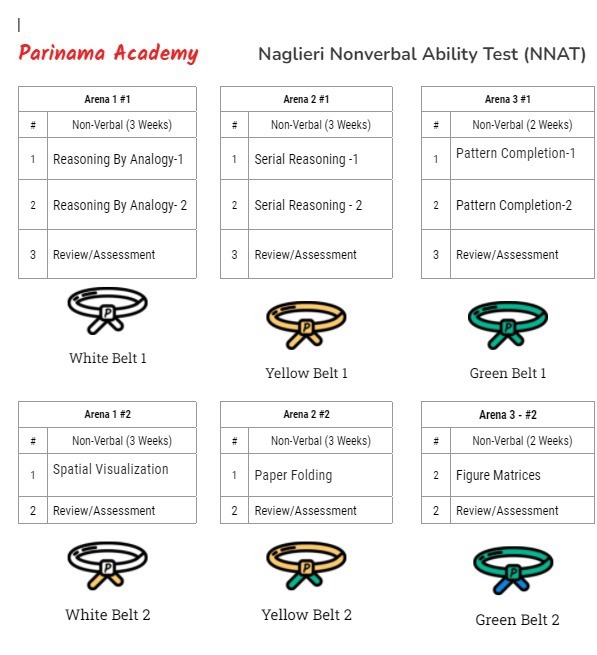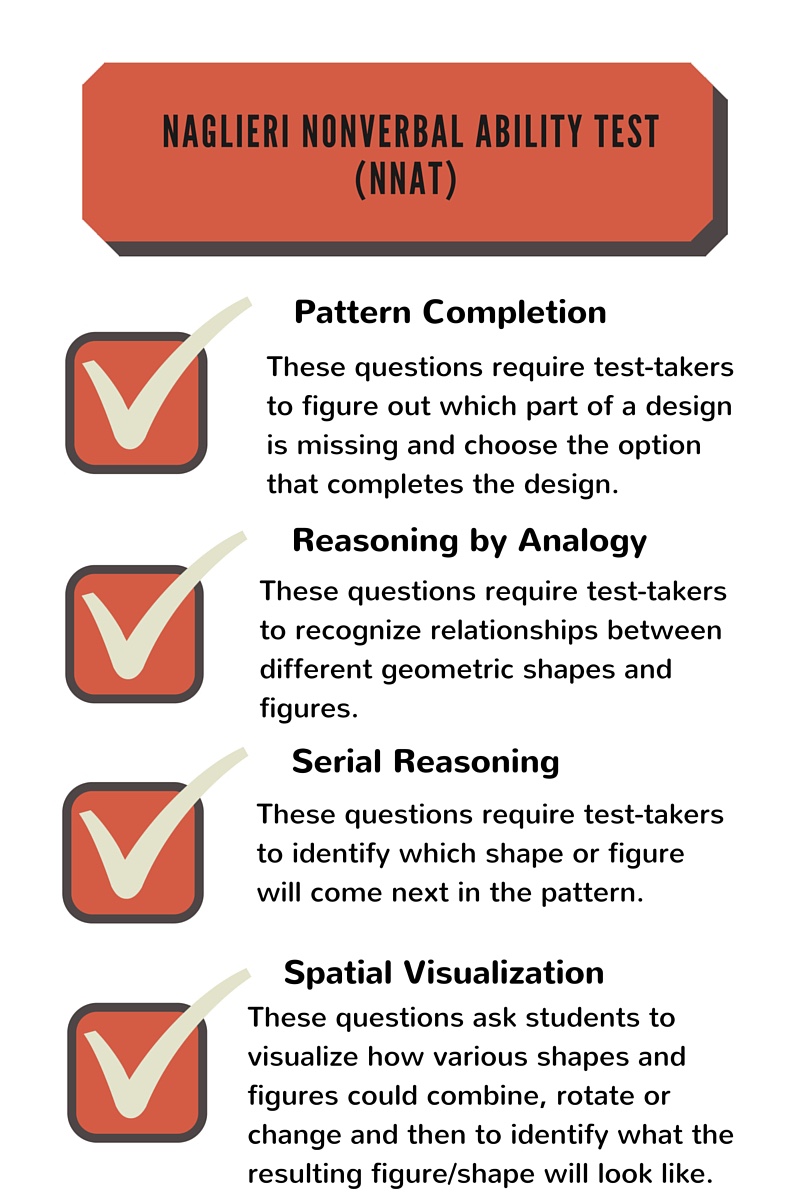Let us check what is NNAT
The Naglieri Nonverbal Ability Test (NNAT), developed by Pearson Inc., is a standardized test designed to assess the reasoning ability of students ages 5 to 17. The NNAT is utilized extensively in the U.S. as part of the admission process for gifted and talented programs. Questions from the NNAT test are used in the NYC Gifted and Talented Test.
The NNAT assesses nonverbal reasoning and general problem solving skills in children.

Because the test is nonverbal, all the questions rely on shapes and figures rather than pictures and words. The NNAT includes four different questions: pattern completion, reasoning by analogy, serial reasoning, and spatial visualization. However, the content on the exam is dependent on the student’s grade level. There are seven NNAT Levels: A (Pre-K and K), B (1st grade), C (2nd grade), D (3rd and 4th grades), E (5th and 6th grades), F (7th– 9th grades) and G (10th – 12th grade).
The NNAT, similar to other gifted assessments, is a difficult exam requiring preparation and familiarity
The Naglieri Nonverbal Ability Test (NNAT3) includes four question types You may see samples of all question types here.

Question Type Description
Pattern Completion In Pattern Completion items, students are shown a design and asked to identify which portion is missing.
Reasoning by Analogy In Reasoning by Analogy questions, students are expected to recognize relationships between various geometric shapes.
Serial Reasoning Serial Reasoning questions require students to recognize a sequence of shapes.
Spatial Visualization In Spatial Visualization questions, students are asked to combine two or more objects and determine how the resulting figure will look like.
NNAT Levels
There are seven NNAT levels administered, depending on the student’s grade level. Not all NNAT test levels contain all four types of questions. For example, the NNAT Level A for kindergarten includes only Pattern Completion and Reasoning by Analogy items.


Recent Comments